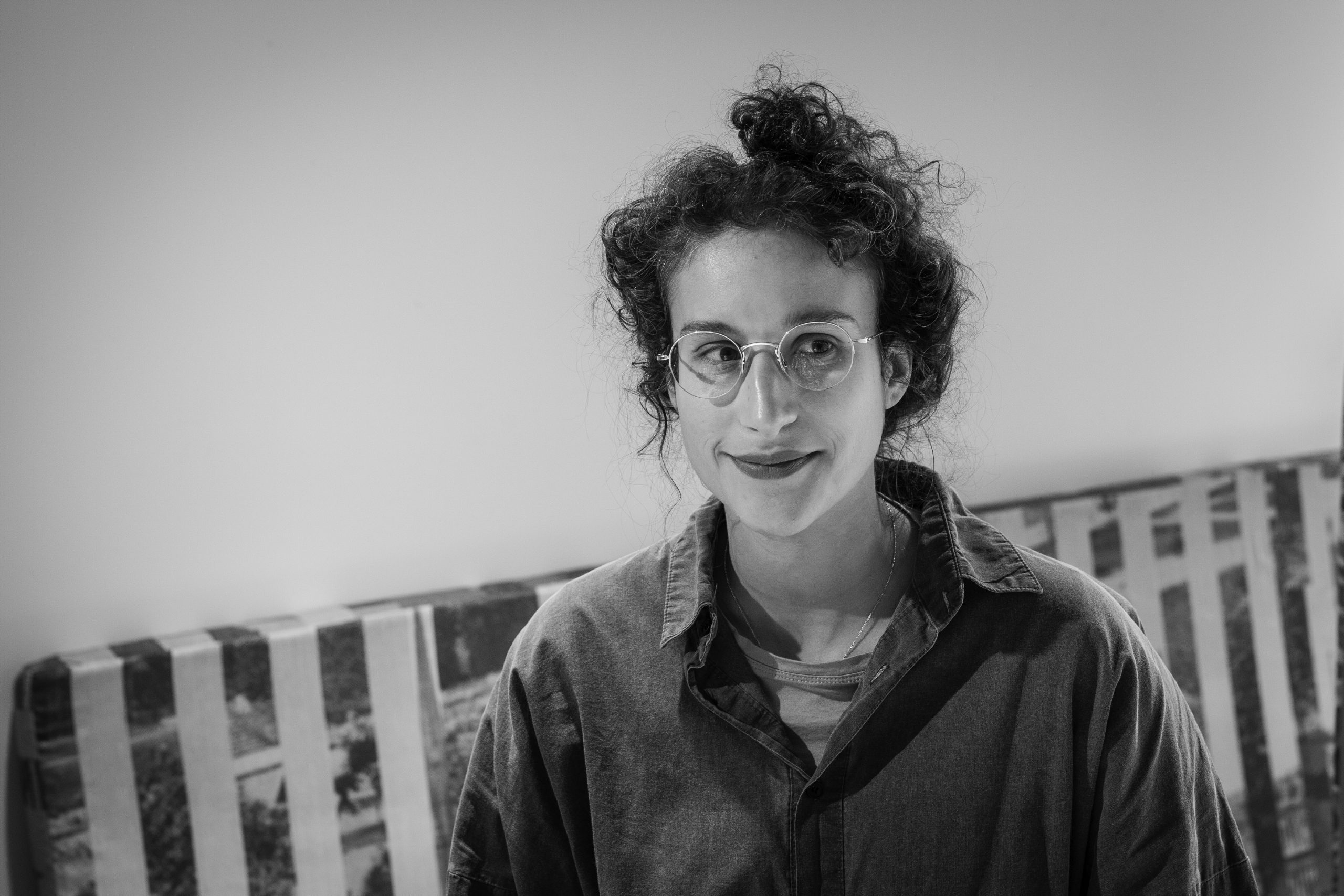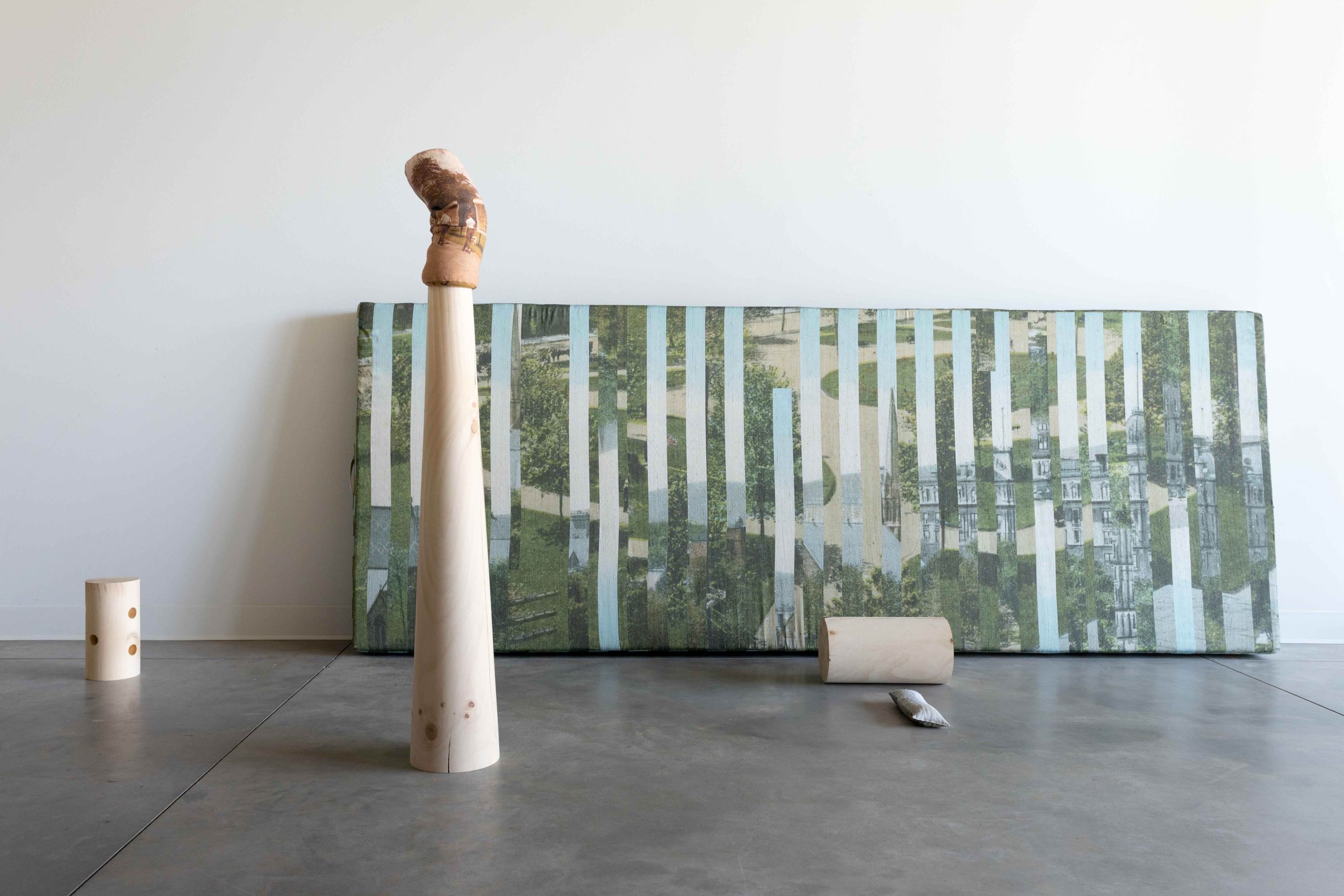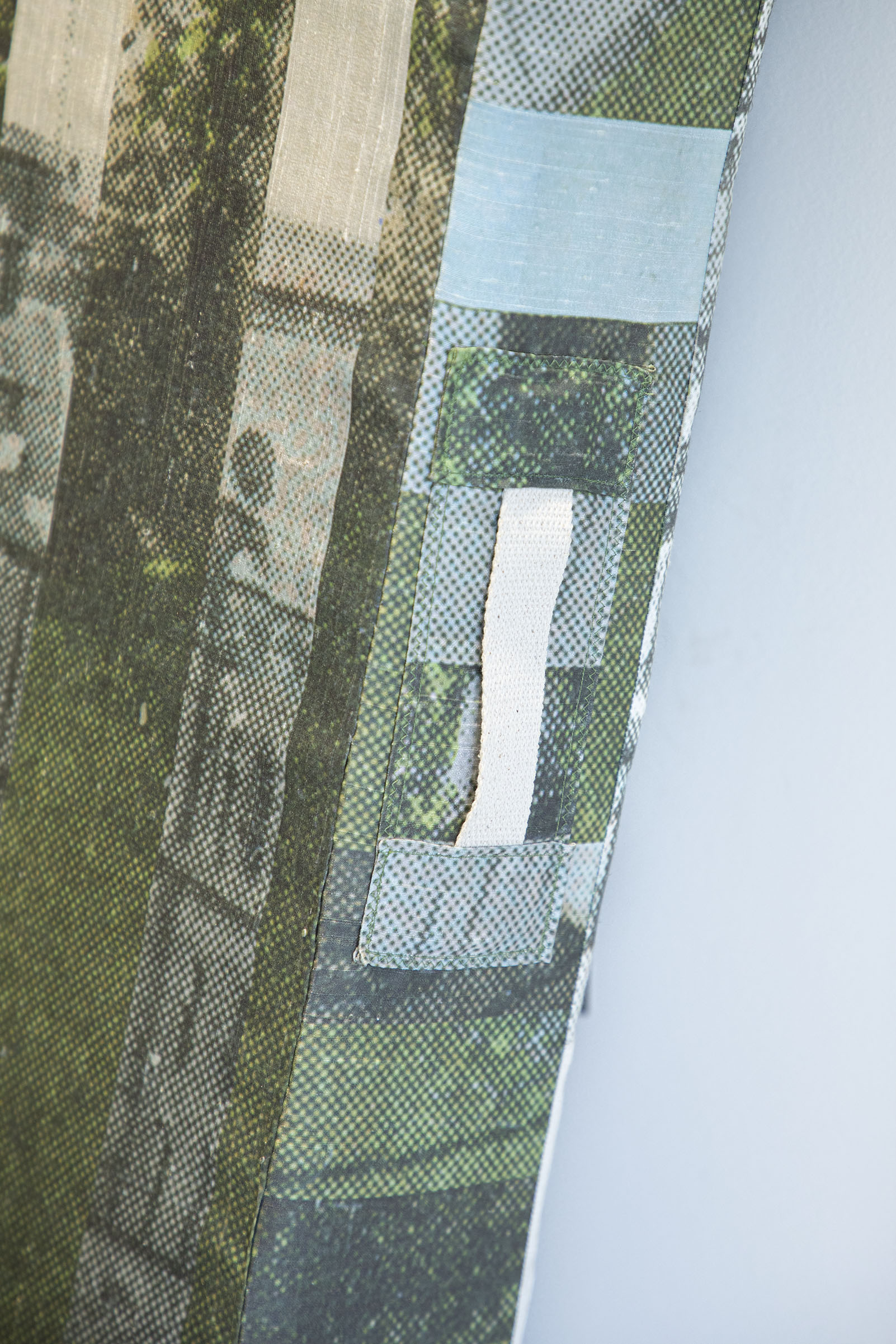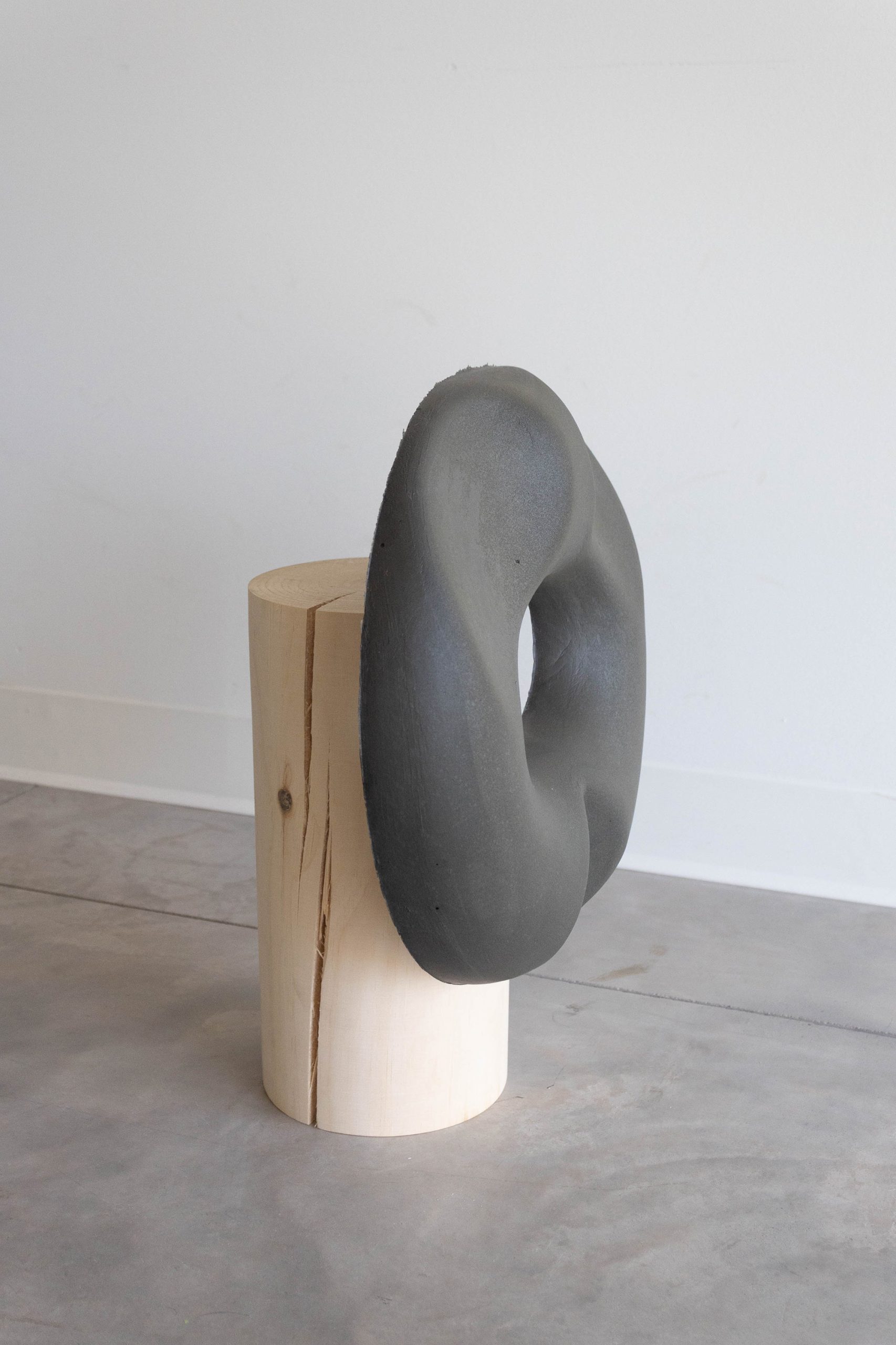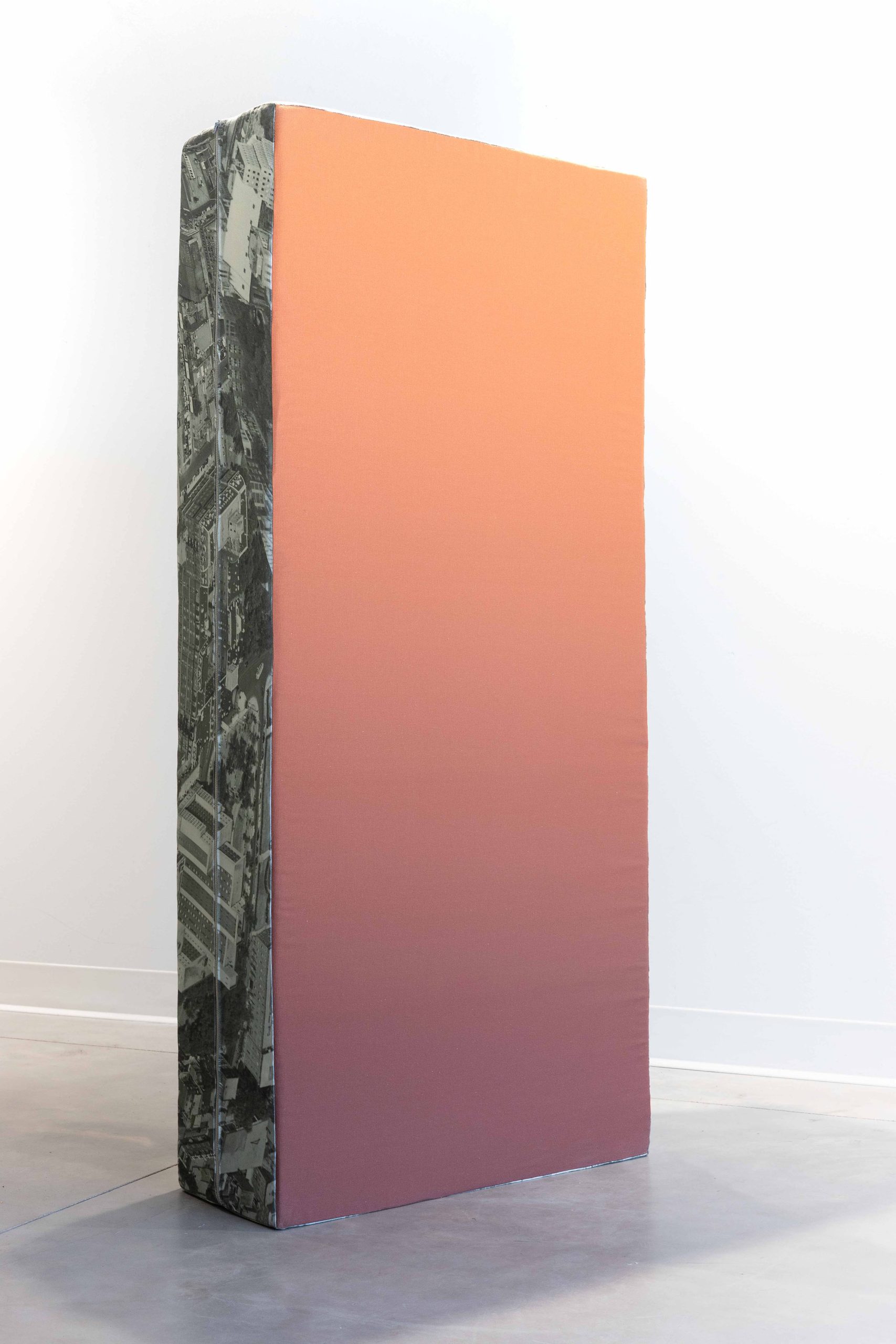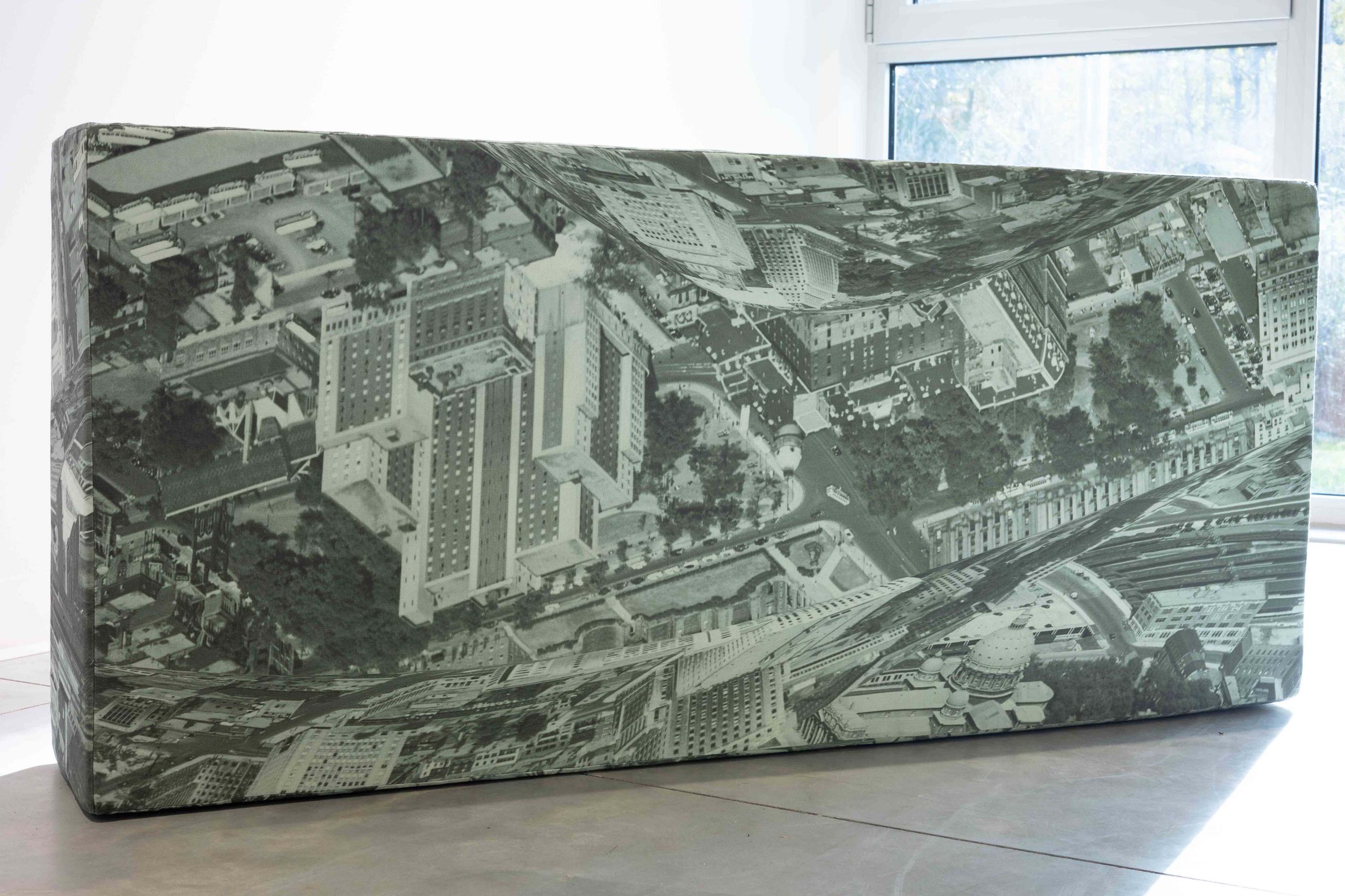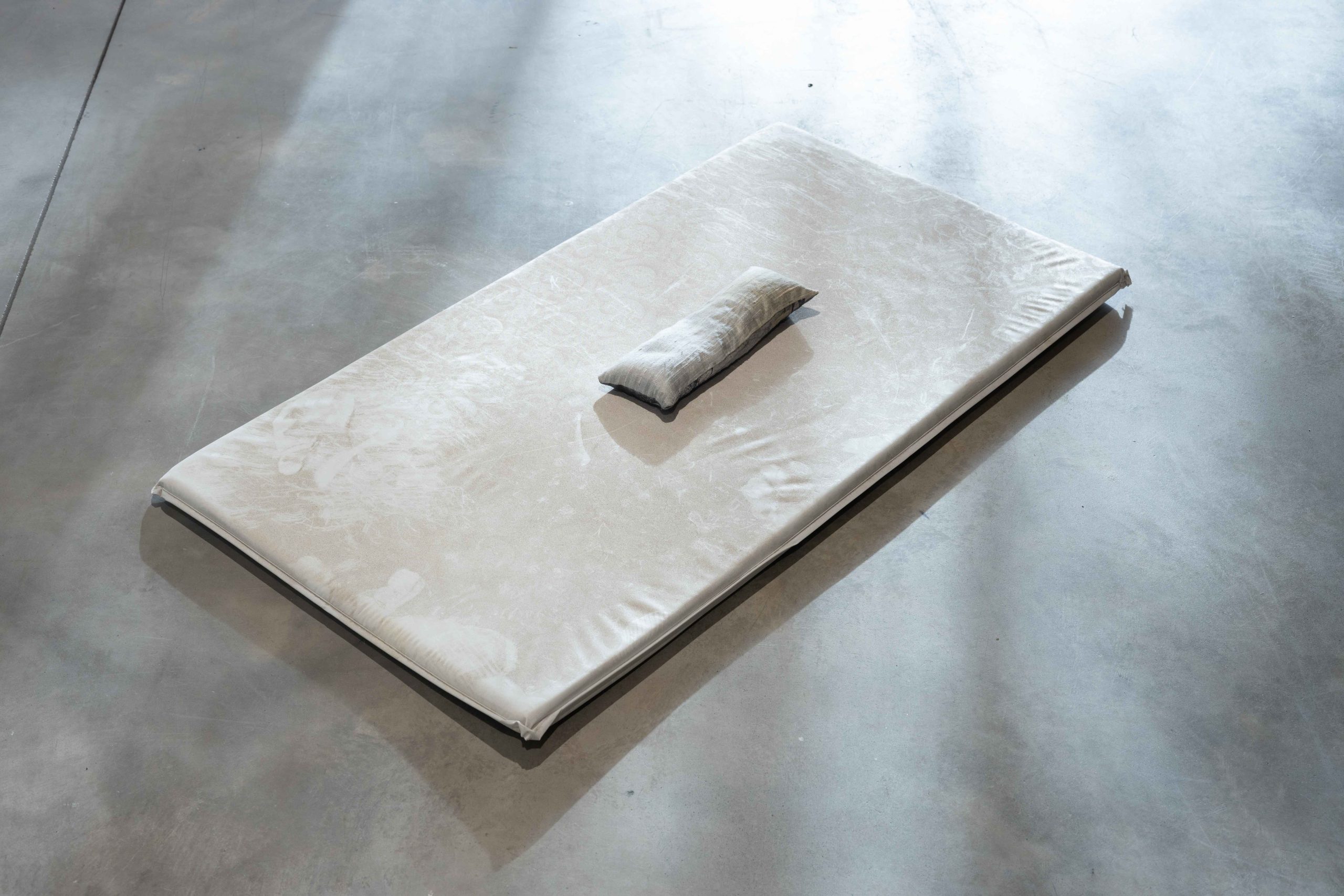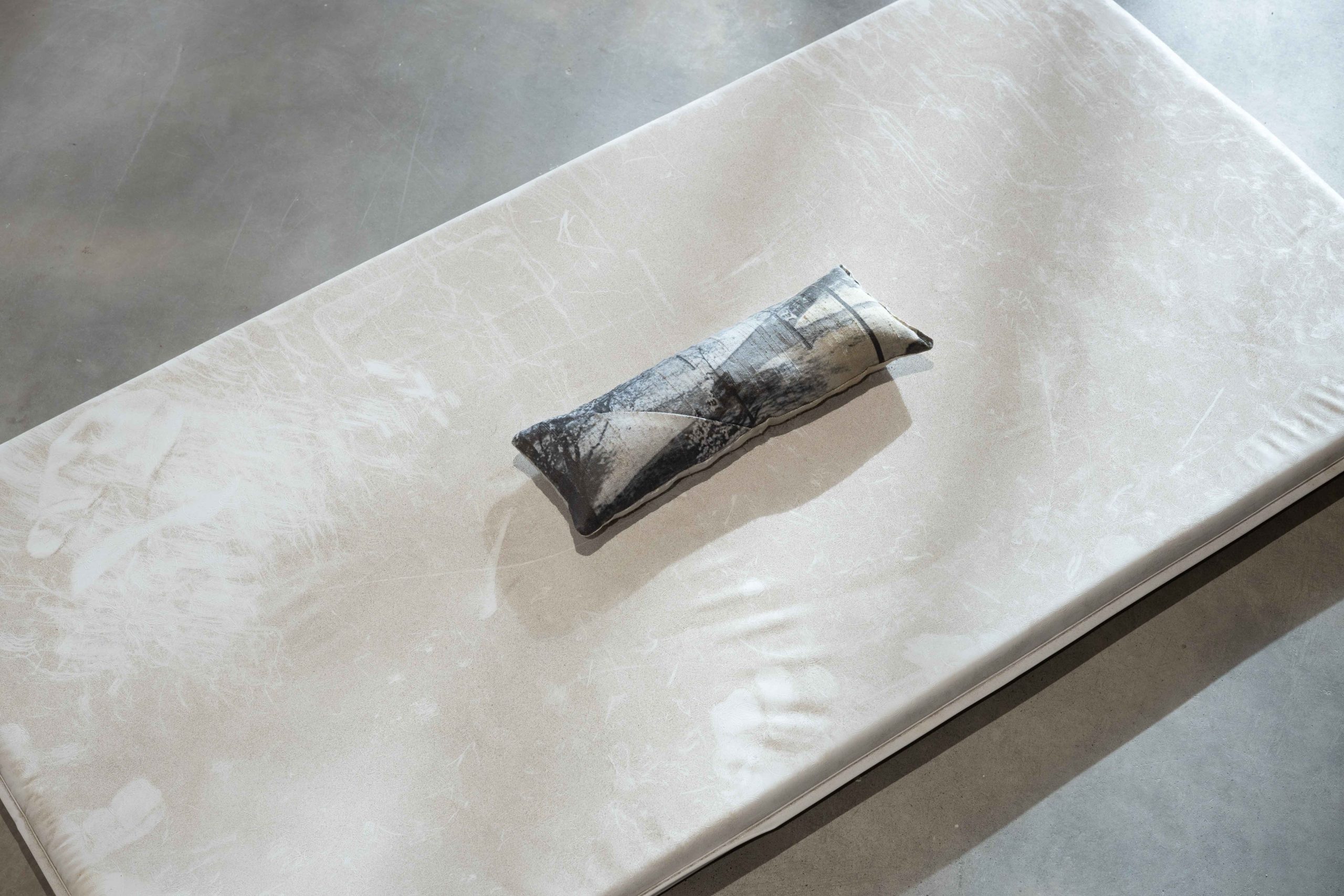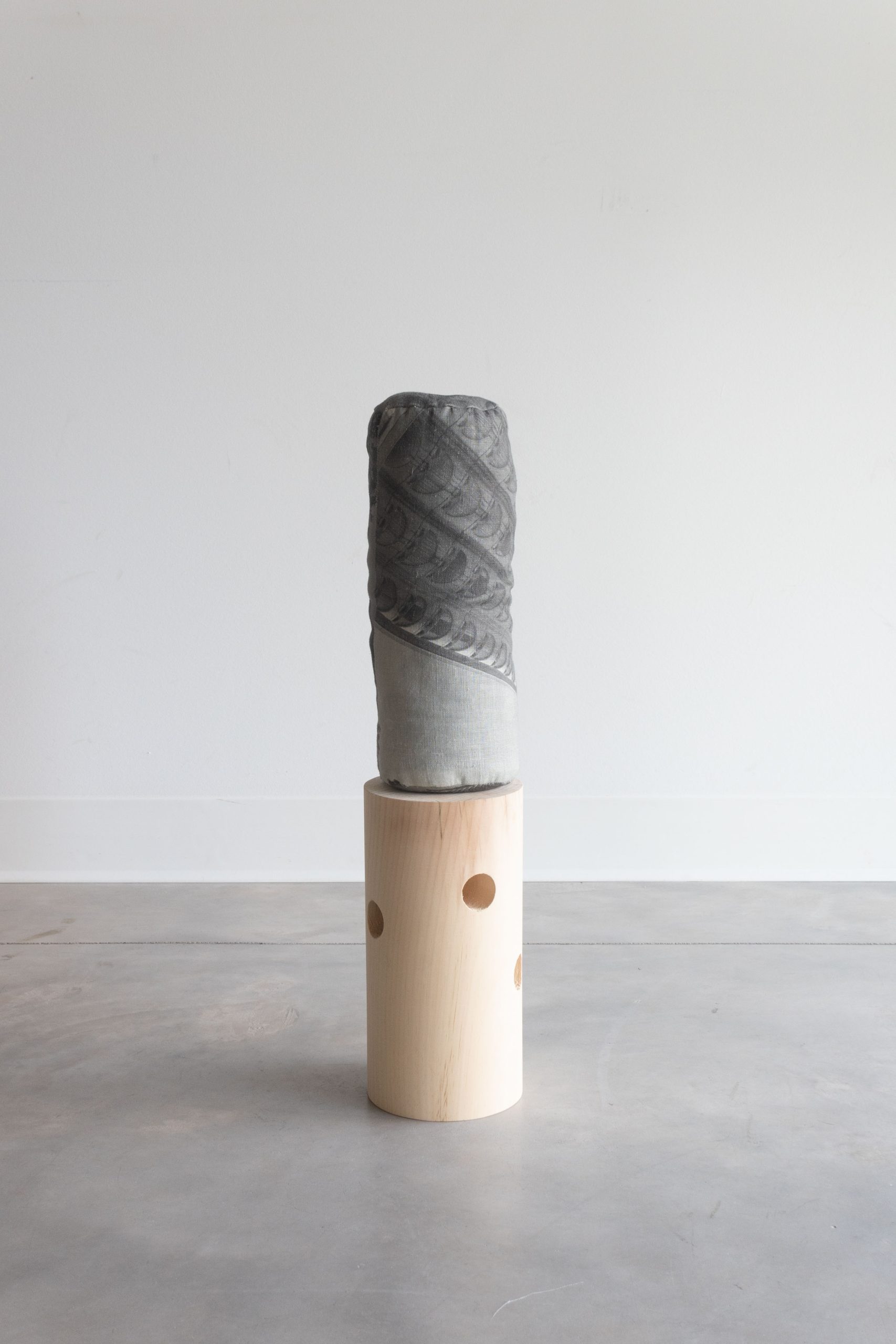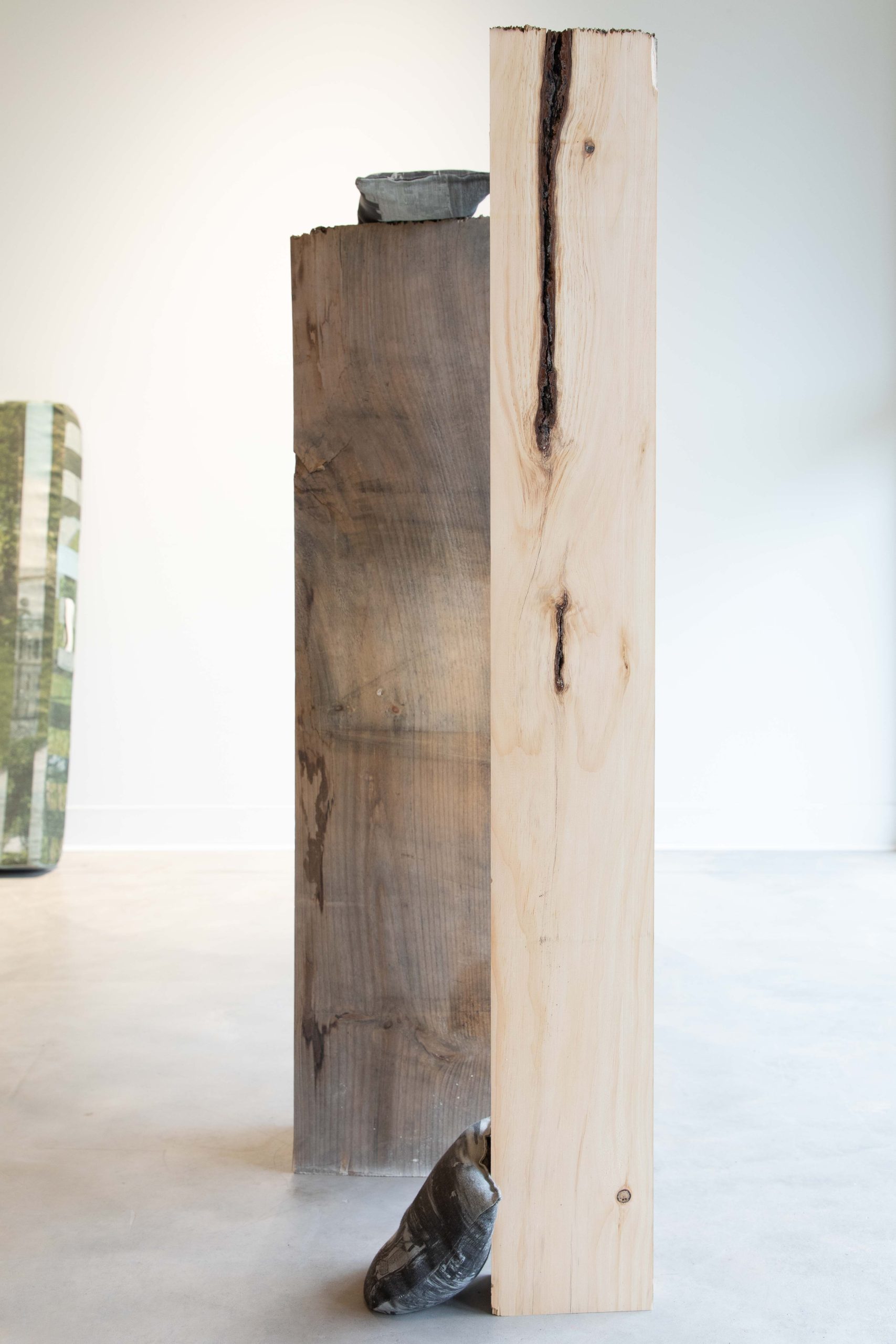
Mariane Stratis
Testimony
The sculpture-installations that Mariane Stratis produced during her residency, made of foam and printed fabric, directly address bodies. The images, printed on linen, cotton, or silk, were sourced from the BAnQ archives. Most of them are old photographs of the former sites of abandoned cemeteries, such as the Faubourg Saint-Antoine (1799–1854), now buried under Square Dorchester and Place du Canada.
This was the first time that Stratis allowed herself to play with archival images by creating distortions. Always sensitive to the integrity of the image – she specializes in documentation of artworks – she took the liberty of erasing the war monuments that she didn’t want to integrate into the collective narrative she was aiming for. This deletion, performed by digital processing or directly on the fabric (with an eraser or bleaching products), is both a gesture of recomposing colonial history and an aesthetic gesture of formal assemblage. Stratis produces soft archives and cushion-artworks that create social bodies with a view to caring, both personal and collective. Although this juncture is found in the work of many artists, for Stratis it is the emotional and haptic aspect of care, for which art is the matrix, that predominates.
The production of these works at Est-Nord-Est is the culmination of research for a master’s degree. Stratis, who is also a member of the collective doux soft club, here returns to her ideas regarding softness by using materials with strong sensory qualities. This time, a desire is expressed to create objects related to falling: evoking the landing pits used in gymnastics and the circus, memory foam is activated for performances in which falling will be involved. Landing pits, by etymological proximity, find an echo in the common pits beneath the above-mentioned public squares, where forty thousand graves are still buried. Both, Stratis notes, serve to welcome bodies; they metaphorize care as the ultimate respect that one can offer oneself and the other. From this exploratory work, I take away the sensory effectiveness of social textures constructed around loss, mourning, and commemoration.
Biography
Mariane Stratis is an interdisciplinary artist who lives and works in Rivière-du-Loup. In her practice, she focuses on different rituals related to the event of death by exploring the future of the body, its fragility, the care it receives, and how societies manage or process and adapt to the loss of human lives. She creates installation combining sculpture, photography, and textiles, sometimes activated through performance. A master’s student in sculpture and ceramics at Concordia University, Mariane holds a bachelor’s degree in visual and media arts from UQÀM. She is a founding member of doux soft club, a collective of artists and curators created in 2017, which recently had a show at Galerie Axénéo7, with the support of the CALQ (research, creation, and exploration grant).
Discover
Newsletter
Keep up to date with the latest news!
